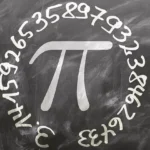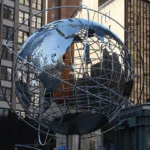The Worm Moon, March's full moon, symbolizes the transition from winter to spring. This year, it reaches its peak on March 25 at 3:00 a.m. Eastern Time, casting a bright glow as earthworms and other invertebrates awaken in the warming soil, heralding spring's arrival.
Eclipse and Equinox: Celestial Alignments
Coinciding with the spring equinox, the Worm Moon brings not only a change in season but also a partial lunar eclipse. This celestial event, where the moon enters Earth's penumbral shadow, offers a unique spectacle, especially for North American observers.
Cultural and Historical Significance
The name “Worm Moon” traces back to Native American and colonial origins, linked to the emergence of beetle larvae, not just earthworms, from the thawing winter ground. This period marks a time of natural rebirth and renewal, reflected in various names like the Crow Moon, Sugar Moon, and Strong Wind Moon, each telling a story of the transitioning season.
Observing the Night Sky
The vernal equinox brings balanced day and night, setting the stage for the Worm Moon's appearance and the accompanying solar eclipse. Skywatchers can enjoy a vivid display as the moon rises, complemented by other celestial events like Mercury's peak visibility.
These celestial phenomena underscore the harmony between human culture and the natural world. Traditional names for the full moon in March reveal deep connections with the environment, as communities historically aligned their activities with the lunar cycle and seasonal changes.
A Guide to Stargazing
For the best experience, observe the Worm Moon as it rises in the east after sunset, particularly on the nights surrounding its peak. This period also presents a rare opportunity to view a moonbow, a night-time rainbow formed by moonlight.
As astronomical tools and public interest in celestial events grow, observing phenomena like the Worm Moon and its accompanying eclipse becomes more accessible, fostering a global appreciation for the night sky's wonders.
Astronomical Impact
The Worm Moon, with its associated lunar eclipse, highlights the intricate ballet of celestial mechanics and Earth's natural cycles. Astronomers and ecologists alike appreciate this period as it provides insights into the Earth-moon relationship and its effects on terrestrial ecosystems.
The increased lunar illumination during the full moon phase affects nocturnal wildlife, influencing feeding patterns, predator-prey interactions, and nocturnal navigation. This celestial event offers a moment to reflect on the interconnectedness of cosmic and earthly life, prompting discussions on how such natural phenomena continue to shape biological rhythms and behaviors.
Educational and Cultural Exploration
The Worm Moon and its surrounding events present an excellent opportunity for educational outreach and cultural exchange. Schools and community groups often organize stargazing events, leveraging these celestial occurrences to teach about astronomy, mythology, and environmental science.
The diverse names and folklore associated with the Worm Moon across different cultures provide a rich tapestry of stories and traditions, offering a platform for cultural exchange and learning. These activities not only enhance public understanding of astronomical events but also foster a sense of community and shared wonder at the universe's marvels.

Lifelong bacon junkie. Lifelong internet fanatic. Hipster-friendly travel aficionado. Twitter lover. Avid food buff. Incurable travel trailblazer.













